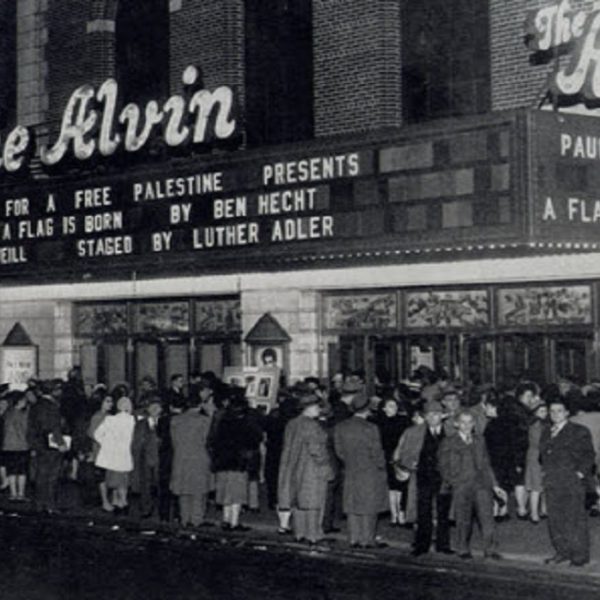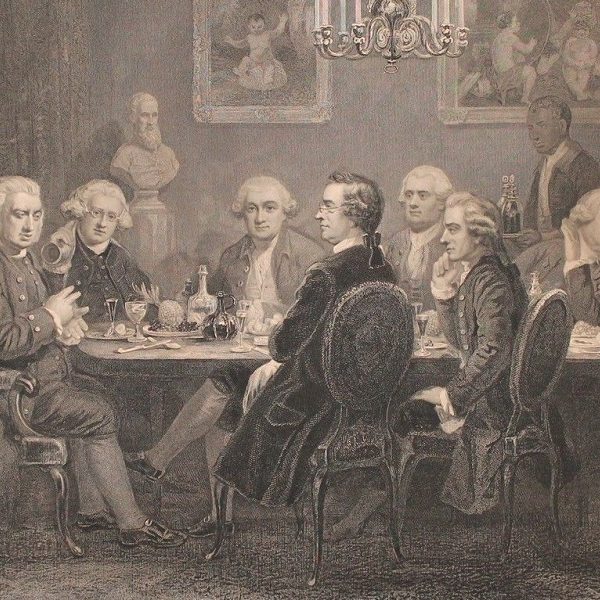Sneak Peek of Whistler: A Life for Art’s Sake
 In March of 2014, we will publish the first biography of James McNeill Whistler in 20 years. Whistler: A Life for Art’s Sake by Daniel E. Sutherland offers a more human portrait of the artist than ever before published, balancing the popular image of Whistler as a boastful and confrontational publicity-seeker with the careful description of a complex and introspective artist. Here, to whet your appetites, is a brief excerpt that tells the story of a voyage Whistler took to South America in 1866.
In March of 2014, we will publish the first biography of James McNeill Whistler in 20 years. Whistler: A Life for Art’s Sake by Daniel E. Sutherland offers a more human portrait of the artist than ever before published, balancing the popular image of Whistler as a boastful and confrontational publicity-seeker with the careful description of a complex and introspective artist. Here, to whet your appetites, is a brief excerpt that tells the story of a voyage Whistler took to South America in 1866.
Returning to London in mid-November, Whistler received a worried letter from his mother in Germany. It concerned Willie. Her younger son had been in England nearly eight months without fixing a new course in life, she said. Some degree of malaise, even melancholy, could be expected in someone recovering from the trauma of war, but his routine of late nights on the town and listless days in Jemie’s studio worried her. “[I]f I did not know his artistry,” she said, “I’d let him sleep on; but he is gifted in talent as you are.” Jemie must shake him from his stupor.
By January 1866, with Willie returned from Germany, rumors said the brothers would go to America. Swinburne, having seen an American journal that praised Whistler’s work, told him, “[T]hey worship the ground that you walk on.” Apparently, Whistler wanted to see for himself, as well as seek “new subjects for painting,” and Willie would make an ideal companion. As it turned out, though, the brothers were bound not for North America, but for South America, and therein lies a tale.
The Whistlers had become involved in a dubious money-making scheme cooked up by some ex-Confederates in London. The city was full of former American rebels who feared political or economic reprisals at home. Thousands of them had fled to every part of the globe, not just England, but also the Continent, Canada, Mexico, and South America. Most refugees sought only peace and security, either for the short term or as permanent expatriates. However, some Confederate soldiers signed on as military advisors or mercenaries with foreign governments.
A shadowy figure named Henry H. Doty brought the Whistlers into this maelstrom. Doty, an inventor of naval weaponry who had helped the Confederate government develop its torpedo program, and Hunter Davidson, a former rebel naval officer experienced at deploying torpedoes, had agreed to assist Chile and Peru in their war against Spain by transporting three steam-powered “torpedo boats” from England and destroying a Spanish naval blockade at Valparaiso. Doty then appears to have recruited Willie, whom he had met during the war, and Willie secured a place for his brother as Doty’s “secretary.”
Doty promised Jemie a salary of £30 per month, travel and living expenses, and a share of a £60,000 commission should the mission succeed. That would be enough money to pay his debts and establish him in a style befitting a successful artist. Whistler needed a change of scene, too. He was still drifting artistically, freed of Courbet’s Realism, and attracted by Moore’s Classicism, but uncertain of the next step. His hope of finding new subjects to paint said it all. In later years, he claimed that the arms dealers had been drawn to him by his credentials “as a West Point man,” but it seems unlikely that anyone outside Whistler’s family knew or cared about his singularly unimpressive military career.
Anna only knew that her sons might be entering “into danger,” and that the trip represented a “crisis.” Whistler also appreciated the danger, and so made arrangements. He gave up the lease on his house, placed his belongings in the care of friends, and sent Anna to stay with the Hadens. Anna wanted him to leave £100 for his “model,” Jo. “[Y]ou promised me to promote a return to virtue in her,” she reminded him. “I never forget to pray for her.” The son did more than that. He made a will, with Jo his sole beneficiary. He also assigned his power of attorney and entrusted his bank account to her.
Intriguingly, he signed the necessary legal documents as James Abbott McNeill Whistler. The reason for this sudden addition to his name is unclear. Perhaps it was done in solidarity with Willie, whose middle name had always been McNeill. Perhaps he wished to honor his mother, whom he had left so conspicuously out of his will.
There was his Celtic pride, too. He later claimed that he “resented” the name Abbott, and thought it his “right,” as his mother’s eldest son, “to bear her Highland name.” He had recently ordered private stationary embossed with the family crest and motto, “Vincere aut Mori” (Conquer or Die), unaware that both crest and motto belonged to the McNeills of Colonsay, not his mother’s clan, the McNeills of Gigha.
He sailed for the Isthmus of Panama from Southampton on February 2, although he went without Willie. As a former Confederate army officer who had yet to disavow the rebel cause, Willie was denied a passport by U.S. consular officials. He did sign the requisite oath of allegiance to the United States five months later, in order to visit George Whistler in Russia, but even then, the secretary of the American legation in London commented on Willie’s “very surly cast of countenance.” Still, Jemie did not travel alone. He escorted Mrs. Doty and her companion on the voyage. Henry Doty, who joined Davidson on the iron-hulled steamer used to transport the promised weapons, thought it best that the ladies not travel with him.
By the time Whistler reached Valparaiso on March 12, having endured a nerve-wracking journey across Panama, the diplomatic situation had become tense, the military situation dangerous. Great Britain, the United States, France, Russia, and Sweden, hoping to defuse tensions and permit legitimate trade to flow in and out of Chilean and Peruvian ports, had sent warships to Valparaiso. The Spaniards were ready to bombard the town should these peacemakers interfere. The Chileans, who had purposefully left Valparaiso unfortified and had no warships there, pinned their hopes on Doty’s contraband torpedoes and a pre-emptive strike against the menacing Spanish fleet.
Meanwhile, Whistler passed the time by playing secret agent. In fact, having enlisted with Doty for “special service,” that appears to have been his principal assignment. He observed the movements of the several national naval squadrons and kept track of diplomatic negotiations. He listened and observed in the city’s cafés and hotels. He recorded the comings and goings of ships and the progress of peace talks. He learned the name of each ship’s commanding officer and made friends with the British naval officers, with whom he occasionally dined. He traveled through Chile and Peru by railroad and on horseback and observed the preparation of defenses in the Peruvian port of Callao.
So stood things on the day before Easter, when a fragile ceasefire ended. Amid rumors that torpedoes would soon arrive from the United States and Great Britain, the Spanish had announced their intention four days earlier to bombard Valparaiso and warned all neutral ships to leave the harbor. For three hours, beginning around 9 a.m., Spanish guns pummeled government buildings, warehouses, private dwellings, and commercial property. Few casualties resulted, primarily because the populace, including Whistler, had fled to the hills above the city. Far from playing the “West Point man” when the shooting started, Whistler’s “one idea was to get away.”
Satisfied with its work, the Spanish fleet sailed north to Peruvian waters on April 14 and did battle with Peru’s navy on May 2. Both sides claimed victory, but the Spaniards then headed home. Although a final treaty would not be signed for nearly twenty years, the fighting had ended. Meanwhile, Whistler, still awaiting Doty and Davidson, passed the time by dining with friends and consuming large quantities of wine, ale, cognac, sherry, and absinthe. He borrowed for these “expenses” from Mrs. Doty, who held the purse strings in Valparaiso.
Having brought his pigments and brushes on the expedition, Whistler painted, too. Indeed, on June 12, he commented wistfully that the Royal Academy’s annual summer exhibition had been running for more than a month. Whistler began four oil paintings during his weeks at Valparaiso and appears to have made two other pictures on the trip. The Valparaiso paintings, depicting ships in the harbor, are among the few visual records of the Spanish blockade, apparently the only eyewitness views. Whistler may have set up his easel as early as April 1, the day after the bombardment, for he called one picture The Morning After the Revolution. He probably did not complete any of the pictures until returning to London, and he worked on at least two of them into the 1870s.
Two paintings, later titled Crepuscule in Flesh Colour and Green: Valparaiso and Symphony in Gray and Green: The Ocean, displayed the tonal fluidity of Trouville, their colors seamlessly blended by Whistler’s long, delicate brush strokes. He applied the paint using a technique he would later describe as like “breath on the surface of a pane of glass.” The mood of the paintings was also striking, with ships, sea, and sky enveloped by mist, fog, and twilight. However, a third painting, to be called Nocturne in Blue and Gold: Valparaiso, offered something quite different, the harbor at night. Whistler had painted the Thames shrouded in mist or fog, but this night scene, its effects reminiscent of earlier pictures by his Pre-Raphaelite friends Holman Hunt and George Boyce, presaged the next dramatic step in his art.
He might have done more had not Doty and the armaments ship finally arrived on July 24, more than four months after Whistler had reached Chile. Anything that could have gone wrong on Doty’s voyage had done, including mechanical breakdowns, pursuit by a Spanish warship, and a minor mutiny. Of course, with the war ended, the Chileans would not be paying for the torpedoes. The expedition was a bust. Whistler later said of the moment, “[W]e breakfasted, and that was the end of it.” Not quite. The men exchanged words. A frustrated Whistler slapped someone, probably a Doty associate. Doty accused Whistler of seducing his wife. Captain Davidson accused Doty of cheating him out of £100, then signed on with another band of mercenaries to fight for Peru. Doty returned to England. Whistler booked passage home for early September.
The return voyage had its own brand of excitement. Three times in as many days, Whistler engaged in fist fights. First, he assaulted a fellow passenger, likely Haitian, aboard the West Indian steamer Shannon, bound from St. Thomas to Southampton. “He offended my prejudices as a Southerner,” Whistler declared unabashedly. Blows were exchanged, and Whistler so injured his right hand as to require a sling. When the passenger then tried to revive the battle, the ship’s captain asked Whistler to remain in his cabin and posted a guard at his door. Or so Whistler claimed. Another passenger, admittedly unfriendly to Whistler, said the captain had confined him because he had been drinking heavily. All the “Gentlemen” on board, insisted Whistler, said that the “black scoundrel deserved his kicking.”
The second incident grew from the first one. The ship’s mail agent, Baldwin A. Wake, who was a “strong abolitionist,” had hurled sharp words at Whistler following the scuffle. The next day, he entered Whistler’s cabin to continue the harangue. Whistler, out of respect for Wake’s fifty-three years, kept himself in check. He asked Wake to withdraw, lest they come to blows, at which the impassioned Wake accused Whistler of cowardice. At that, Whistler, his injured hand still in a sling, slapped Wake with his good hand. They grappled; Wake struck Whistler in the eye. Whistler’s guard, hearing the ruckus, rushed in to pull Wake away. Whistler’s friends urged him to complain to the American authorities in England, which he did upon landing the next day, but the consulate chose not to intervene.
The final altercation came when, upon reaching London, Whistler was met by Henry Doty at Waterloo Station. A row ensued. Each struck the other, and Doty, as he recounted it, denounced his antagonist so that all might hear: “This is Whistler the Artist, A scoundrel, A seducer, A betrayer of his trust, Mark him.” Whistler then fled, Doty said, to seek refuge in the cloakroom. Whistler recalled only that his former associate had displayed such “astounding impudence,” given the farcical end to their arms dealing, that he struck Doty in “a sudden outburst of passion!”
As things turned out, the incident at Waterloo Station would not end the affair. For the moment, though, Whistler wished only to rejoin Jo at her cottage in Walham Grove.
Copyright © 2014 by Daniel E. Sutherland. All rights reserved.
Daniel E. Sutherland is Distinguished Professor of History, University of Arkansas. The recipient of more than fifty awards, honors, and grants, he is best known for his acclaimed series of books chronicling nineteenth-century America.

























